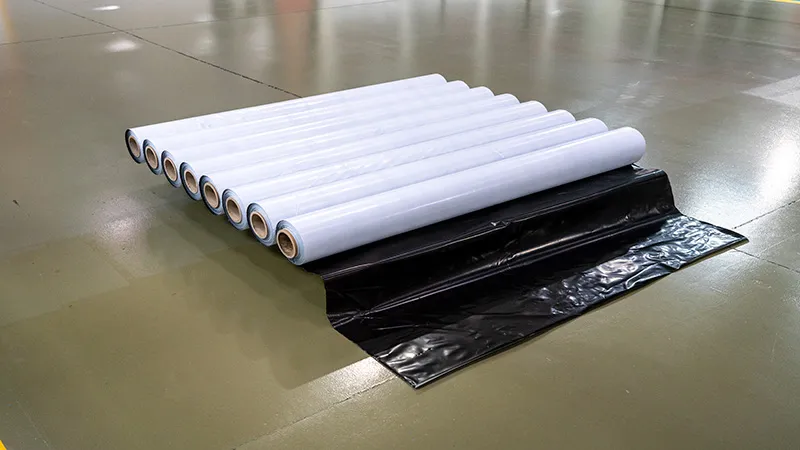G’day, mate! Farming in our sunburnt country is no easy feat. But guess what’s been a game changer for many farmers?
The answer is Silage tarp. Dive in with me to explore this pivotal tool in Australian agriculture.
Delving into the World of Silage Tarps
Named as also silage cover, think of the silage tarp as a protective blanket, crafted from durable plastic, designed to cover your soil or crops.
In the diverse terrains of Australia, silage tarps are a must-have for any farm. They play a pivotal role in ensuring superior crop protection and optimizing the growing season.
Why Farmers Choose Silage Tarp
The silage tarp is akin to a warm cuppa on a cold morning for soil health. They create a conducive environment, enhancing microbial activity and ensuring the ground is ready for the next planting.
Weapon of Weed Seeds Germinate
Before weed seeds germinate and become a menace, silage covers come to the rescue. By depriving young weeds of light, these tarps reduce weed pressure dramatically, especially useful in a minimal tillage system.
Maintaining Moisture and Reducing Compaction
Every drop counts on a farm. Silage covers are impeccable at preserving moisture. Plus, they prevent unwanted soil compaction, setting the stage for a fruitful garden.
Practical Applications: Using Your Silage Tarp
One size doesn’t fit all. Measure your garden or farm beds, ensuring you have enough tarps to cover your needs. Anchor your tarp using sandbags along its edges to stand up against those notorious Aussie winds.
Bed Preparation and Timing
Timing is crucial. For optimal bed preparation, cover your soil with a silage tarp during the spring, two weeks before seeding. Then uncover in the summer, when it’s time for planting.
Myth Busting: Heat, Hassle, and Durability
Some reckon the Aussie sun’s too brutal for plastic tarps. On the contrary, quality silage tarps are UV-resistant and known for their durability. And while setting up tarps can be a tad challenging initially, it becomes second nature with practice.
Pro Tips for the Aspiring Farmer
Covering your farm beds with silage tarps post-harvest is a splendid way to prepare for the next growing season. Use a flail mower to handle plant residues before covering.
Check soil moisture levels regularly, ensuring it’s not waterlogged. And for those garden beds, make sure you’ve got two beds side by side, covering one while planting in the other.
The Game Changer for Modern Agriculture
When weed pressure mounts, or when the soil needs rejuvenation, turning to green manure or minimal tillage might not always be enough. That’s when silage tarps become invaluable, helping farmers through every season, and ensuring their crops thrive.
Conclusion
Silage tarp is not just plastic covers. They’re an Aussie farmer’s key ally. From reducing weed seeds to ensuring bed preparation, their benefits are manifold. So, next time you admire a lush farm or garden, tip your hat to the silage tarp that likely played a part.
FAQs
- How does a silage tarp prevent weed seed from germinating?
- By blocking light, silage tarps create an environment where weed seeds can’t germinate effectively.
- What’s the ideal duration for covering soil with a silage tarp?
- Typically, two weeks is adequate, but it can vary based on specific crop needs.
- Can silage tarps withstand the harsh Australian summers?
- Absolutely, quality silage tarps are UV-resistant and designed for such conditions.
- How often should I replace my silage tarp?
- With good care, these tarps can last several seasons. Durability varies based on usage and brand.
- What’s the role of green manure in bed preparation?
- Green manure, incorporated into the soil, decomposes and adds nutrients, preparing beds for the next crop. Covering it with a silage tarp accelerates the process.
- Are there eco-friendly alternatives to plastic silage tarps?
- While plastic tarps are most common, innovations are underway to introduce biodegradable alternatives.
- How do I anchor the tarp to avoid it getting blown away?
- Using sandbags or weighted objects along the tarp’s edges ensures it remains grounded.
- How does covering with tarps benefit soil health?
- By boosting microbial activity and preserving moisture, the health and fertility of the soil are enhanced.
- Can I use these tarps in both spring and summer?
- Yes, while spring is ideal for bed preparation, tarps can also protect crops during the scorching summer months.
- How do silage tarps fit into a minimal tillage system?
- They effectively suppress weeds, reducing the need for frequent tilling, thus complementing minimal tillage practices.

